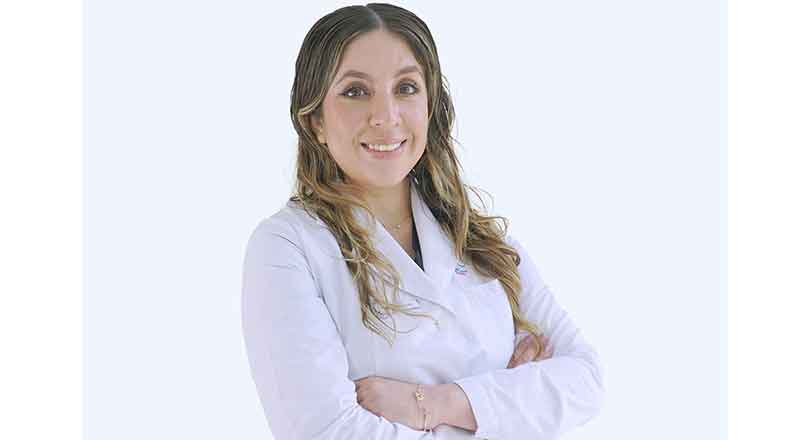Reynosa, Tam.-
Actualmente, muchas mujeres deciden prolongar su maternidad. Regularmente por factores como su vida profesional, desarrollo académico o porque simplemente aún no ha llegado el momento correcto.
Cada una de nosotras tenemos la oportunidad de decidir cuándo es el momento apropiado para convertirnos en madres. Ya que la maternidad trae consigo muchas responsabilidades y cambios en tu vida.
La edad en la cual biológicamente tenemos mayores oportunidades de ser madres con un menor riesgo es antes de los 35 años; no significa que exista una edad límite para tener un bebé.

Sin embargo; a los 35 la disminución en la calidad y cantidad de ovocitos comienza a hacerse más evidente. Por lo que, si la maternidad es un plan a futuro y estamos por sobrepasar los 35 años, la congelación de óvulos es una opción para poder prolongar nuestra maternidad.
Al acudir con un especialista o centro de fertilidad, se efectuará una valoración y probablemente un plan de acción; el cual incluirá una evaluación física, hormonal, nutricional y psicológica con la finalidad de prepararte para el proceso de congelación de ovocitos.
El médico debe explicarte detalladamente en qué consiste el proceso, habitualmente toma de 8 a 12 días en los cuales se requerirán de 3 a 4 visitas, según el especialista. También, se realizarán controles por ultrasonido y análisis de estradiol en sangre, para asegurar que se obtengan mejores resultados en la extracción de los ovocitos. Después de la extracción en quirófano, los ovocitos pasan a un manejo por parte del laboratorio para su crio-preservación.
El objetivo final del proceso es contar con una cantidad óptima de ovocitos. Cada mujer será un caso distinto y, por tanto, el especialista debe tratar y llevar a cabo de forma personalizada el tratamiento. Probablemente, en las mujeres que cuenten con pocos óvulos será conveniente repetir el proceso. En cuanto a la recuperación, es muy breve el tiempo que se requiere de reposo y en general en una semana regresará la menstruación a su normalidad y podrán realizar sus actividades normales.
Los ovocitos se mantendrán crio-preservados, sin modificaciones, y en las condiciones óptimas sin afectar su calidad, hasta que llegue el momento correcto para usarlos.
Sin duda, hoy gracias a la tecnología en reproducción podemos tomar elecciones y tener alternativas importantes como mujeres.
Puede que no te hayas preguntado sobre el futuro de tu maternidad, o que no tengas aún un plan definido, pero poder adelantarte al futuro y tener un respaldo que te permita ser mamá a pesar del tiempo vale la pena. (Con información de Dra. Lilia B. Leyva Macías)
……………….
I’m not ready to be a mom yet, can I freeze my eggs?
Reynosa, Tam.-
Many women today decide to delay motherhood. This is often motivated by different factors, such as their professional life, academic development or simply because the timing is not quite right yet.
However, women have the opportunity to decide when the time is right for them to become a mother. Motherhood comes with many responsibilities and changes in your life.
Biologically, the age at which we have a better chance of becoming a mother with a lower risk is before the age of 35; it does not mean that there is an age limit to have a baby. Nevertheless, at 35 there is a decrease in the quality and quantity of oocytes that begins to become more evident.
So, if motherhood is a future plan and we are about to surpass the age of 35, egg freezing is an option to lengthen our maternity.
Upon seeing a specialist or fertility center, an assessment will be made, and a plan of action will probably be drawn up, which may include a physical, hormonal, nutritional and psychological evaluation to prepare you for the oocyte freezing process.
The doctor should explain the process in detail, it usually takes 8 to 12 days in which 3 to 4 follow-up consultations will be required, depending on the specialist. Ultrasound controls and estradiol blood tests are also performed to ensure the best results are achieved in the extraction of the oocytes. After the extraction in the operating room, the oocytes are then handled by the laboratory for cryopreservation.
The ultimate goal of the process is to have an optimal amount of oocytes. Each woman will be a different case and, therefore, the specialist must treat and carry out the treatment in a personalized way. It will probably be convenient to repeat the process in women who have few oocytes. As far as recovery is concerned, the time required for rest is very short and, in general, within a week menstruation will be back to normal and women can go on with their normal routine.
The oocytes remain cryopreserved, unmodified, and in optimal conditions without affecting their quality, until the right time to use them arrives.
Undoubtedly, today thanks to reproductive technology we are able to make significant decisions and have alternatives as women.
You might not have asked yourself about the future of your maternity, or you still don’t have a clear plan, but being able to be ahead of the future and having a backup that helps you to be a mother regardless time is very worthwhile. (With information of Dr. Lilia B. Leyva Macias)



